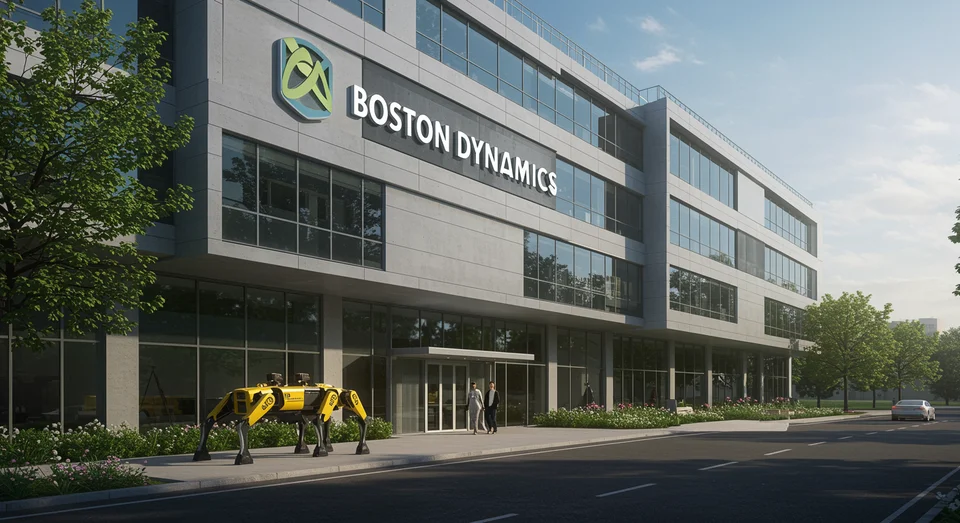Boston Robotics Industry Faces Challenges in Scaling to Global Tech Giant Status
28 views
Boston, long celebrated as a cradle of robotics ingenuity, stands at a crossroads. The city, home to titans like iRobot, Boston Dynamics, and Amazon Robotics, has cultivated a reputation as a global epicenter for cutting-edge automation. Yet, despite its storied history and a steady stream of promising startups, the robotics industry has yet to see its defining moment—a breakout company achieving the scale and influence of tech juggernauts like NVIDIA or Meta. Instead, the sector continues to grapple with a labyrinth of challenges that have stymied its path to transformative growth.
The Struggle to Scale: Robotics’ Balancing Act Between Innovation and Viability
The trajectory of robotics startups often mirrors a precarious tightrope walk. These companies generally face three potential outcomes: sustained profitability, acquisition, or failure. While acquisitions have occasionally punctuated the industry's timeline—Meta’s purchase of Faciometrics and Amazon’s acquisition of Kiva Systems are notable examples—no robotics firm has yet ascended to the towering heights of global dominance. The absence of such a player underscores the unique complexities of scaling robotics ventures, where hardware and software must harmonize in a delicate interplay of innovation and reliability.

Unlike software-focused companies, robotics startups must contend with the physical world—a realm where precision and durability are not mere luxuries but necessities. The challenge lies in creating products that are not only groundbreaking but also robust enough to withstand real-world conditions. This dual demand for ingenuity and resilience often forces startups to make difficult trade-offs, particularly when navigating the chasm between early-stage success and long-term sustainability. Infrastructure costs, an often-underestimated burden, can become a formidable obstacle. Similarly, an over-reliance on a single customer—a pitfall that has ensnared many promising ventures—can leave companies vulnerable to market fluctuations and shifting client priorities.
In this landscape, the key to survival often lies in focus. Companies that thrive tend to excel at solving one problem exceptionally well. Bloomfield Robotics, for instance, has carved out a niche by using AI to monitor plant health, while Boston Dynamics has dazzled the world with its uncanny humanoid and animal-like robots. Yet even these successes illustrate the industry's limitations; while they may capture headlines and imaginations, they have yet to translate their innovations into the kind of ubiquity enjoyed by firms like Apple or NVIDIA.
The Path Forward: Can Robotics Break Through?
Despite these hurdles, optimism persists within the robotics community. Experts believe that the sector is on the cusp of a transformative era, driven by advancements in autonomous vehicles and general-purpose robots. The dream is tantalizing: machines capable of seamlessly integrating into daily life, performing tasks with reliability, affordability, and ease of deployment. Achieving this trifecta, however, remains a formidable challenge.
The promise of autonomous vehicles, for instance, has been a beacon for investors and innovators alike. Companies like Tesla and Waymo have poured billions into the race for self-driving technology, yet widespread adoption remains elusive. The reasons are manifold—technical reliability, regulatory hurdles, and public trust all play a role—but the potential payoff is immense. Should these barriers be overcome, the ripple effects could extend far beyond transportation, catalyzing growth in sectors ranging from logistics to healthcare.
Similarly, general-purpose robots—machines designed to perform a variety of tasks rather than a single specialized function—represent another frontier. The vision is one of versatility: robots capable of cleaning homes, assisting in surgeries, or even serving as companions. Yet, as with autonomous vehicles, the road to realization is fraught with obstacles. Cost remains a significant barrier, as does the challenge of designing robots that can adapt to unpredictable environments. Nevertheless, incremental progress continues to stoke hope, with each breakthrough bringing the industry closer to its long-awaited tipping point.
A Future Worth Waiting For
As Boston’s robotics scene continues to evolve, the question looms: will the city produce the industry’s first true giant? The answer, while uncertain, is worth pondering. Robotics has the potential to reshape the fabric of society, from how we work and travel to how we care for the planet and each other. But for this promise to be fulfilled, the industry must navigate the treacherous waters of scaling—a task requiring not only technical brilliance but also strategic foresight and resilience.
Perhaps the greatest lesson for robotics startups is one of patience. Success in this field is not measured in months or even years; it is a marathon, not a sprint. Companies must resist the temptation to chase fleeting trends or overextend themselves in pursuit of rapid growth. Instead, they must focus on building solid foundations—products that are not only innovative but also reliable, cost-effective, and capable of meeting real-world needs.
Boston, with its rich ecosystem of talent and resources, is uniquely positioned to lead this charge. The city’s history of innovation is a testament to what can be achieved when vision meets determination. And while the robotics industry has yet to produce its NVIDIA or Apple, the seeds of greatness have already been sown. With time, perseverance, and a bit of luck, those seeds may yet grow into something extraordinary—a new era of robotics that changes not only how machines interact with the world, but how humanity interacts with machines.